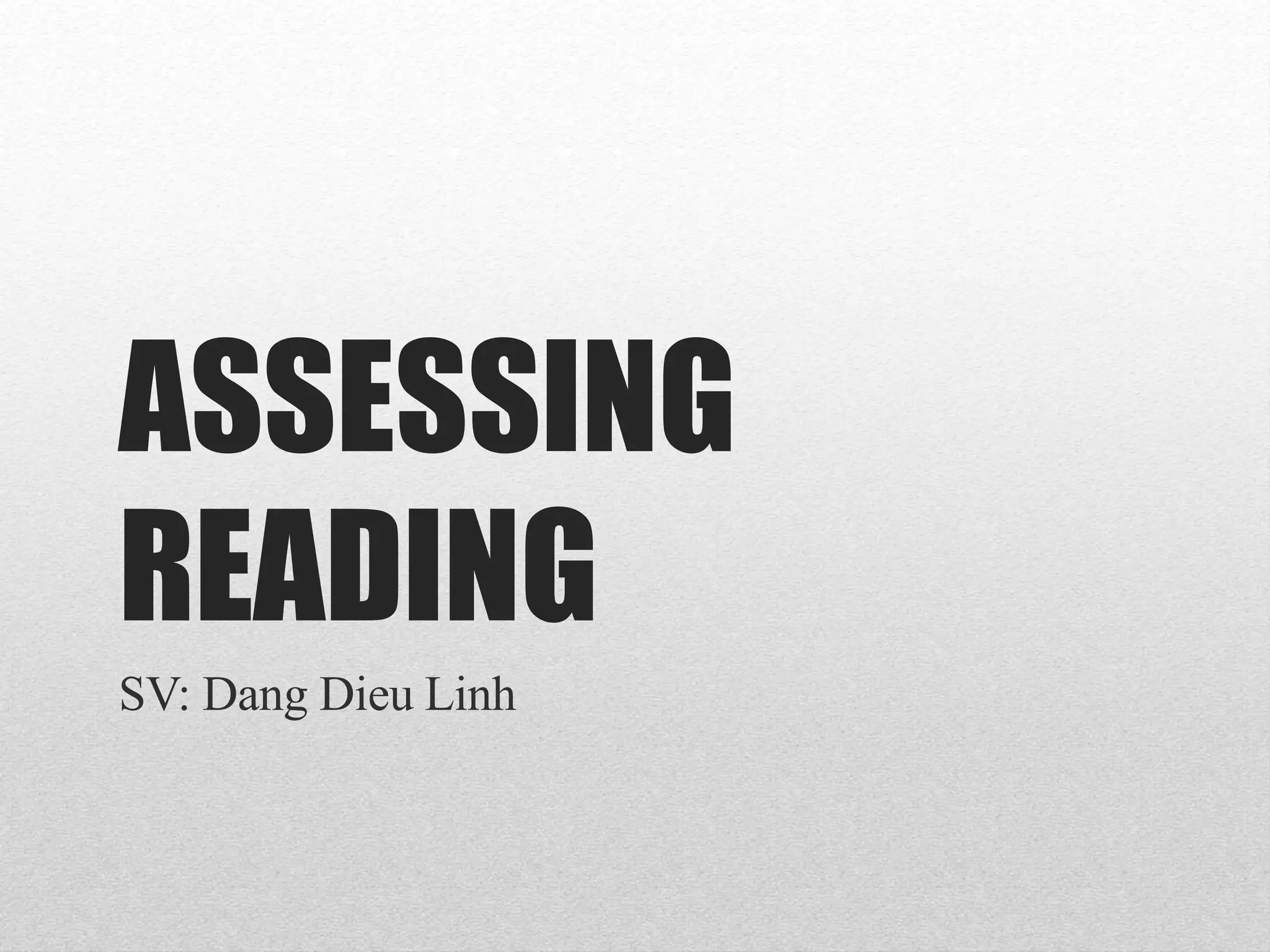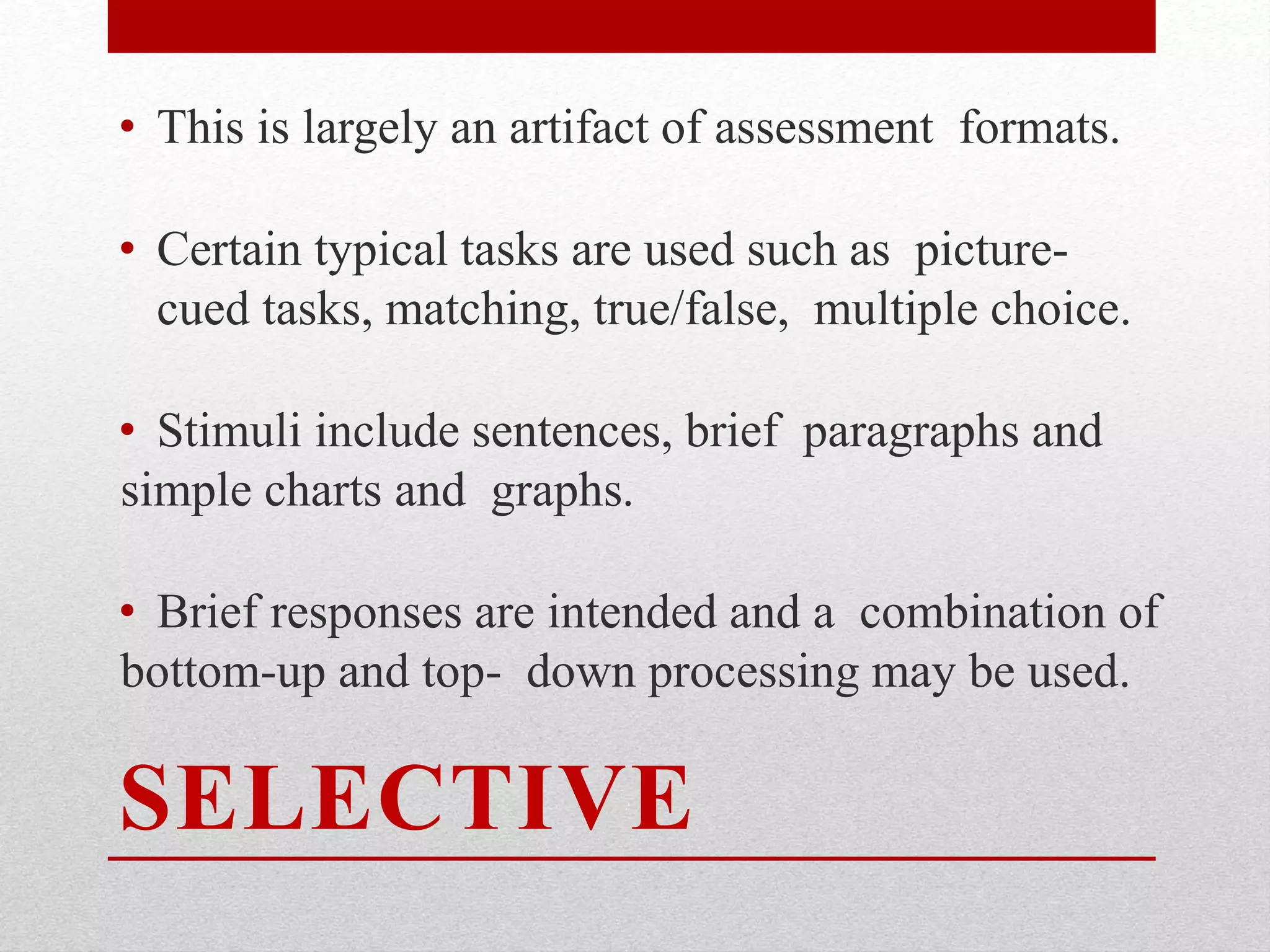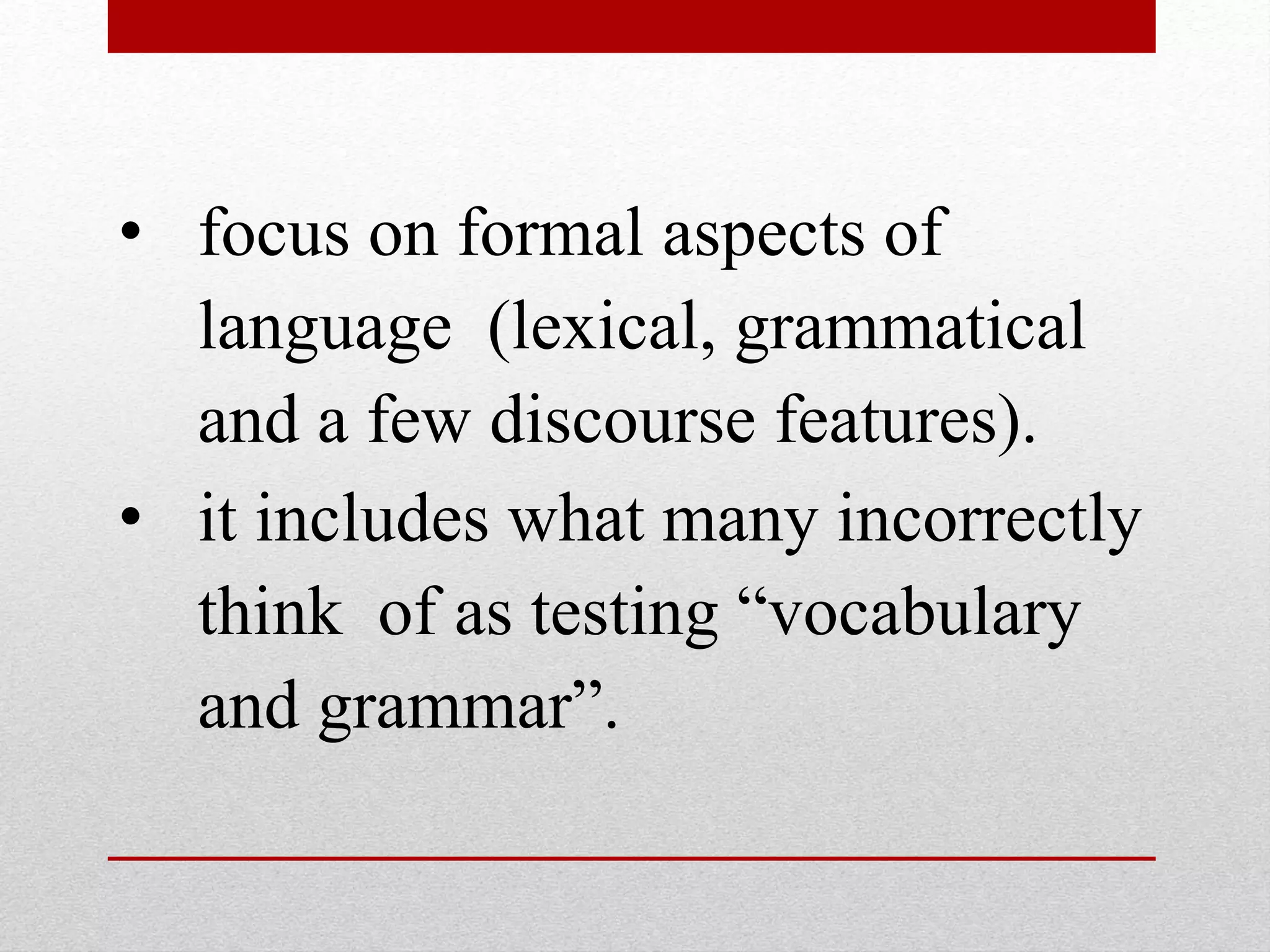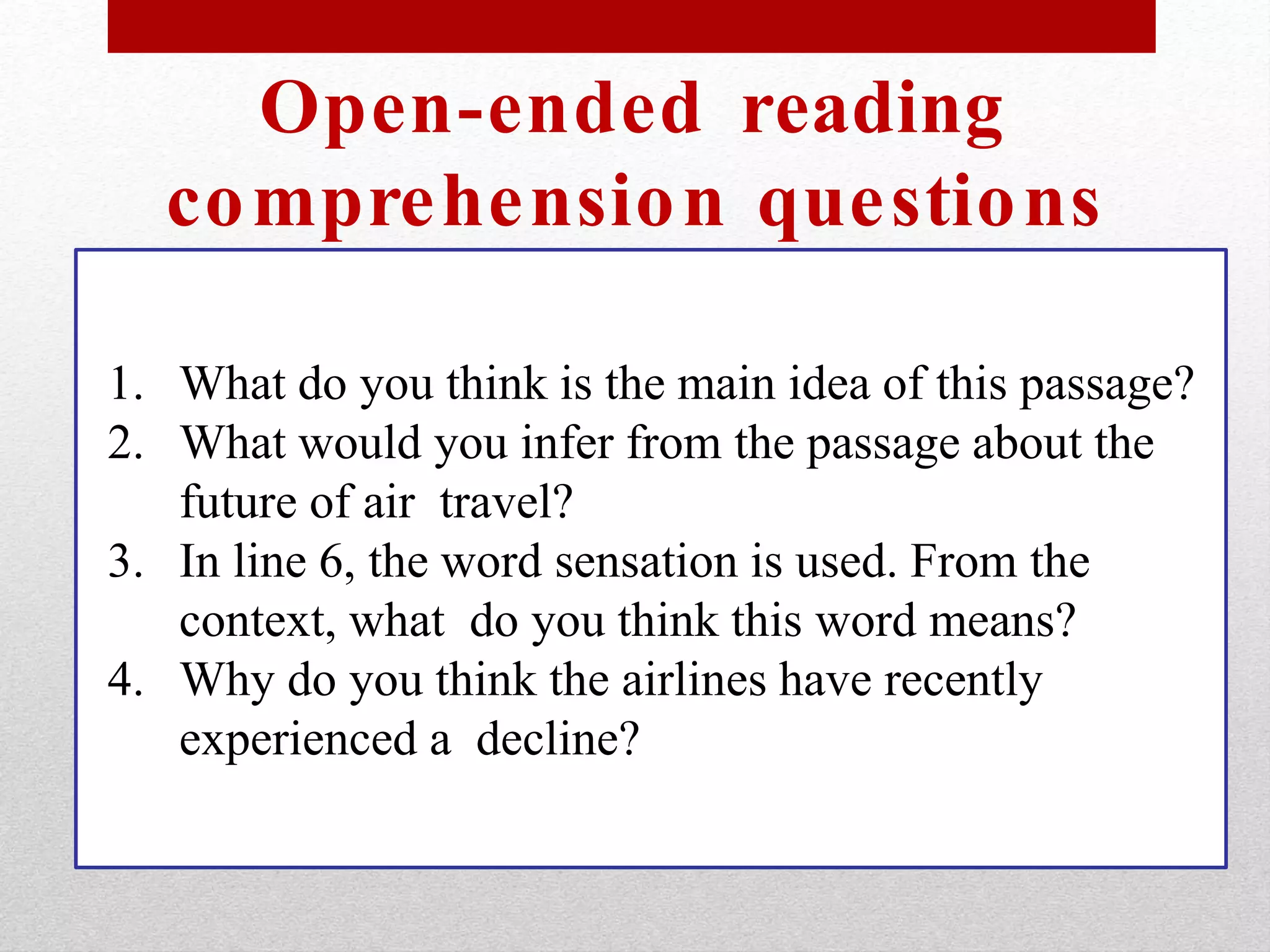1. The document discusses micro and macro skills for assessing reading ability. Micro skills focus on basic literacy and include letter and word recognition, while macro skills involve higher-level comprehension.
2. Types of reading are defined, ranging from perceptive/basic reading to extensive reading of longer texts. Tasks are suggested to measure each type, including cloze tests, summaries, and information transfer from charts.
3. Guidelines are provided for designing reading assessment tasks targeting different skills, such as multiple choice, ordering, and note-taking to measure comprehension of short and long texts.





















































